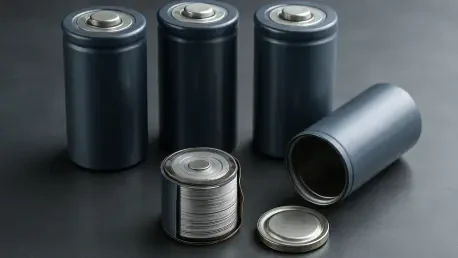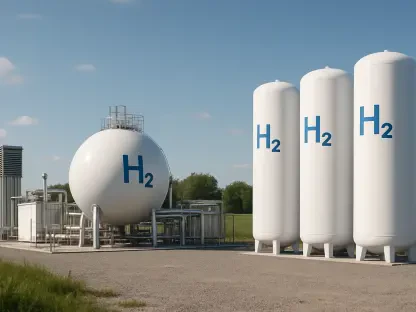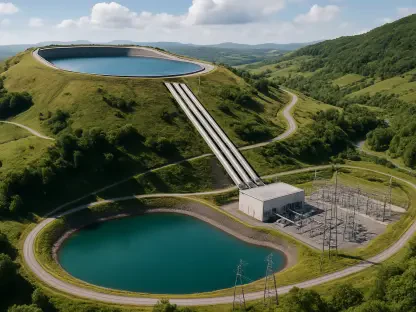In a world racing to power cities, vehicles, and industries with clean energy, a staggering statistic looms large: global stationary storage capacity is projected to surge 12-fold over the next decade, according to BloombergNEF. Amid this unprecedented demand, a quiet contender emerges from the shadows of lithium-ion dominance—sodium-ion batteries. Built from the humble abundance of salt, this technology promises a cheaper, safer alternative to fuel the energy revolution. Could this underdog truly challenge the reigning champion of energy storage, or is it destined to remain a niche player? The stakes are high as supply chains strain and safety concerns mount, setting the stage for a battle that could reshape how power is stored and delivered.
The Rising Star of Energy Storage
The urgency to find reliable, sustainable energy storage solutions has never been more pressing. With lithium-ion batteries powering everything from electric vehicles to grid-scale projects, their limitations—scarce materials, volatile prices, and fire risks—have sparked a search for alternatives. Sodium-ion technology steps into this gap, leveraging widely available resources like soda ash to offer a potential lifeline. Unlike lithium, sodium is not tethered to geopolitical tensions or limited reserves, making it a compelling option for scaling up storage without breaking the bank.
This emerging technology is not just about economics; it’s about redefining what’s possible. Imagine urban data centers or commercial hubs operating without the looming threat of thermal runaway, a dangerous flaw in lithium-ion systems that can ignite catastrophic fires. Sodium-ion batteries, with their inherently lower energy density, reduce such risks, positioning them as a safer bet in high-stakes environments. As the energy landscape shifts, the question remains whether this newcomer can carve out a meaningful space.
Why Sodium-Ion Deserves Attention
Beyond safety, the appeal of sodium-ion lies in its raw material advantage. The United States holds the world’s largest soda ash reserves, a resource so plentiful that it could shield this technology from the price swings that often plague lithium-ion supply chains. This abundance offers a chance to build a more resilient, domestic-focused industry, reducing reliance on foreign materials at a time when energy security is paramount.
Moreover, the global push for clean energy amplifies the need for affordable storage solutions. As grid reliability becomes a cornerstone of climate goals, incidents like the Moss Landing battery fire in California highlight the vulnerabilities of current systems. Sodium-ion’s ability to perform in extreme conditions—hot or cold—through passive cooling mechanisms adds another layer of intrigue. Companies like Peak Energy claim their sodium-ion systems degrade 33% slower over a 20-year lifespan, hinting at long-term cost savings that could tip the scales.
Comparing the Titans: Sodium-Ion vs. Lithium-Ion
When stacked against lithium-ion, sodium-ion batteries reveal both promise and pitfalls. On cost, sodium-ion holds a clear edge, drawing from abundant materials that sidestep the scarcity issues of lithium, nickel, and cobalt. This supply chain stability could insulate it from market volatility, a critical factor as storage demand skyrockets. Yet, energy density remains a hurdle—sodium-ion struggles to pack the same punch, limiting its use in long-duration grid applications.
Safety and performance offer brighter prospects. Sodium-ion’s lower fire risk and superior thermal management make it a standout for environments where stability trumps raw power. Peak Energy’s data suggests a 20% reduction in operating costs compared to lithium-iron-phosphate systems, a common lithium-ion variant. However, regional disparities loom large: China’s massive projects, like a 100 MW/200 MWh sodium-ion installation, dwarf U.S. efforts, where even notable strides—such as a 3.5-MWh project in Colorado—face setbacks from high-profile failures like Natron Energy’s bankruptcy.
Market fit further defines this contest. Sodium-ion shines in shorter-duration applications, ideal for backup power or demand response lasting 15 to 60 minutes. In contrast, lithium-ion retains its crown for longer storage needs. This dichotomy suggests a complementary rather than competitive role, at least for now, as each technology finds its niche in a rapidly evolving sector.
Industry Voices Weigh In
Insights from the field paint a nuanced picture of sodium-ion’s trajectory. Evelina Stoikou of BloombergNEF cautions that plunging costs of lithium-iron-phosphate batteries could stall sodium-ion’s ascent, casting doubt on its near-term scalability. Yet, Peak Energy CEO Landon Mossburg pushes back, championing sodium pyrophosphate chemistry as a breakthrough for price parity, arguing it redefines the economics of storage with unmatched stability.
Darren Tan of Unigrid points to untapped markets, highlighting sodium-ion’s potential in replacing lead-acid car starter batteries—a $15 billion opportunity. Tan emphasizes its strength in short-duration needs, noting that “lithium struggles” in these areas where sodium excels. Meanwhile, Stanford scientist Adrian Yao tempers the hype, questioning whether applications like data center power are realistic given current priorities. Real-world examples, such as China’s hybrid sodium/lithium facilities slashing costs by 30%, underscore tangible progress amid these debates, showing how innovation and scale can intersect.
Charting the Course for Sodium-Ion Success
For sodium-ion to gain ground, strategic steps must guide its integration into the energy mix. Targeting niche applications offers a starting point—focusing on urban settings or commercial backup systems where safety and short-duration storage are critical can build early momentum. These environments value sodium-ion’s reduced fire risk and thermal resilience over raw energy capacity.
Harnessing domestic resources is another key move. Tapping into vast U.S. soda ash reserves could establish a self-reliant supply chain, countering China’s early dominance fueled by state support. Simultaneously, investment in research, particularly advanced chemistries like sodium pyrophosphate, must accelerate to narrow the performance gap with lithium-ion. Finally, forging partnerships with policymakers and industry leaders can create incentives and standards, ensuring sodium-ion isn’t left behind in a market racing toward expansion.
Looking back, the journey of sodium-ion batteries unfolded as a tale of potential tempered by obstacles. The technology carved out a foothold in safety-critical niches, leveraging abundant materials to address supply chain woes that haunted lithium-ion systems. Industry pioneers pushed boundaries with innovative designs, while global disparities—especially China’s rapid scale-up—shaped a competitive landscape. Reflecting on this, the path ahead demanded focused action: prioritizing targeted applications, bolstering domestic production, and sustaining research to unlock sodium-ion’s full capabilities. As the energy storage sector evolved, these steps stood as vital markers to ensure this underdog could one day stand shoulder-to-shoulder with its lithium rival.









